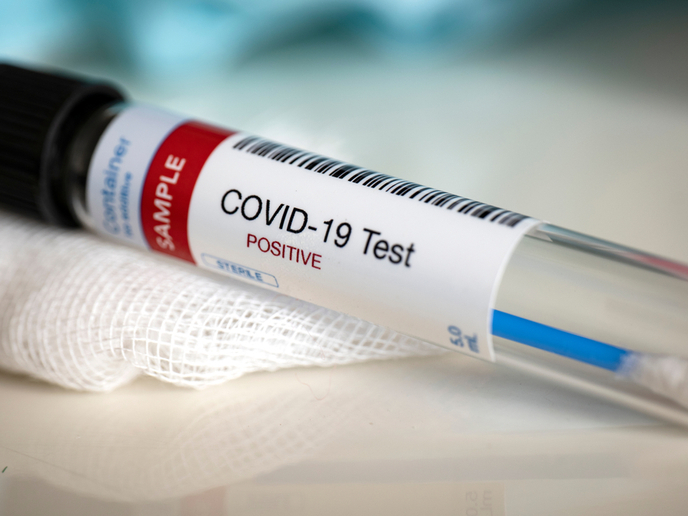Easy, affordable, ultra-rapid testing for COVID-19
Even when they don’t show any symptoms, people infected with the coronavirus SARS-CoV-2 may still be transmitting the virus. Quick and accurate diagnostic tests are therefore vital to prevent further spread of the disease. However, current testing for COVID-19 is costly and usually takes days to obtain the results because samples need to be sent to well-equipped labs and analysed by specialist staff. In response to the need for rapid and affordable detection systems, the EU-funded CORONADX project plans to develop three alternative tests that can be performed by personnel with little or no training. What’s more, the samples don’t need to be sent anywhere for analysis – the tests can be carried out at hospitals, clinics, mobile labs or even at home. The CORONADX team is already in the process of developing the first ultra-rapid test that will be used to screen for SARS-CoV-2. Called PATHAG, this non-commercial test requires no auxiliary equipment and hardly any training. Furthermore, it will cost less than EUR 1 per sample and provide results in less than 60 seconds. “Compared to other systems, PATHAG has the advantage of being faster and cheaper, and does not require any special equipment,” confirmed Hans-Christian Slotved of Danish project partner Statens Serum Institut in a press release posted on the ‘Science X’ website. “We want to be able to tell people whether they test positive or not in a matter of minutes.” Because of its rapidity and simplicity, PATHAG is ideal for monitoring people quarantined at home and screening at places such as airports and train stations where many people gather. “COVID-19 testing is key not only for clinical management but even more so for epidemiological surveillance and control of the COVID-19 epidemic,” stated Anna Odone of project partner Vita-Salute San Raffaele University, Milan, in the same press release. “The availability of rapid and highly sensitive tests represents a unique opportunity in the fight against COVID-19, given their potential effects on the provision of effective preventive services and their positive societal and economic impacts.”
How PATHAG works
In the PATHAG test, SARS-CoV-2 antibodies are embedded in microscopic latex beads and the solution is then mixed into the patient’s sample. If the virus is present in the sample, the antibodies bind to the virus’ particles, carrying the latex beads with them to form a clump that can be seen with the naked eye. The reaction takes 10 to 20 seconds and can be performed on a small strip of paper. PATHPOD and PATHLOCK, the other two diagnostic tests the researchers are working on, are based on innovative technologies called LAMP and CRISPR-Cas13, respectively. “With the reopening of schools and activities, mass monitoring with fast and affordable tests becomes paramount. Our three systems will save time and ease pressure on laboratories, which we badly need during a pandemic,” scientific coordinator Anders Wolff of the Technical University of Denmark observed in the press release. The CORONADX (Three Rapid Diagnostic tests (Point-of-Care) for COVID-19 Corona Three Rapid Diagnostic tests (Point-of-Care) for Coronavirus, improving epidemic preparedness, public health and socio-economic benefits) team expects to have PATHAG ready by the end of 2020. Field tests will first be conducted in Denmark before the diagnostic kit is deployed in other countries. For more information, please see: CORONADX project website
Keywords
CORONADX, PATHAG, diagnostic test, COVID-19, SARS-CoV-2, coronavirus



